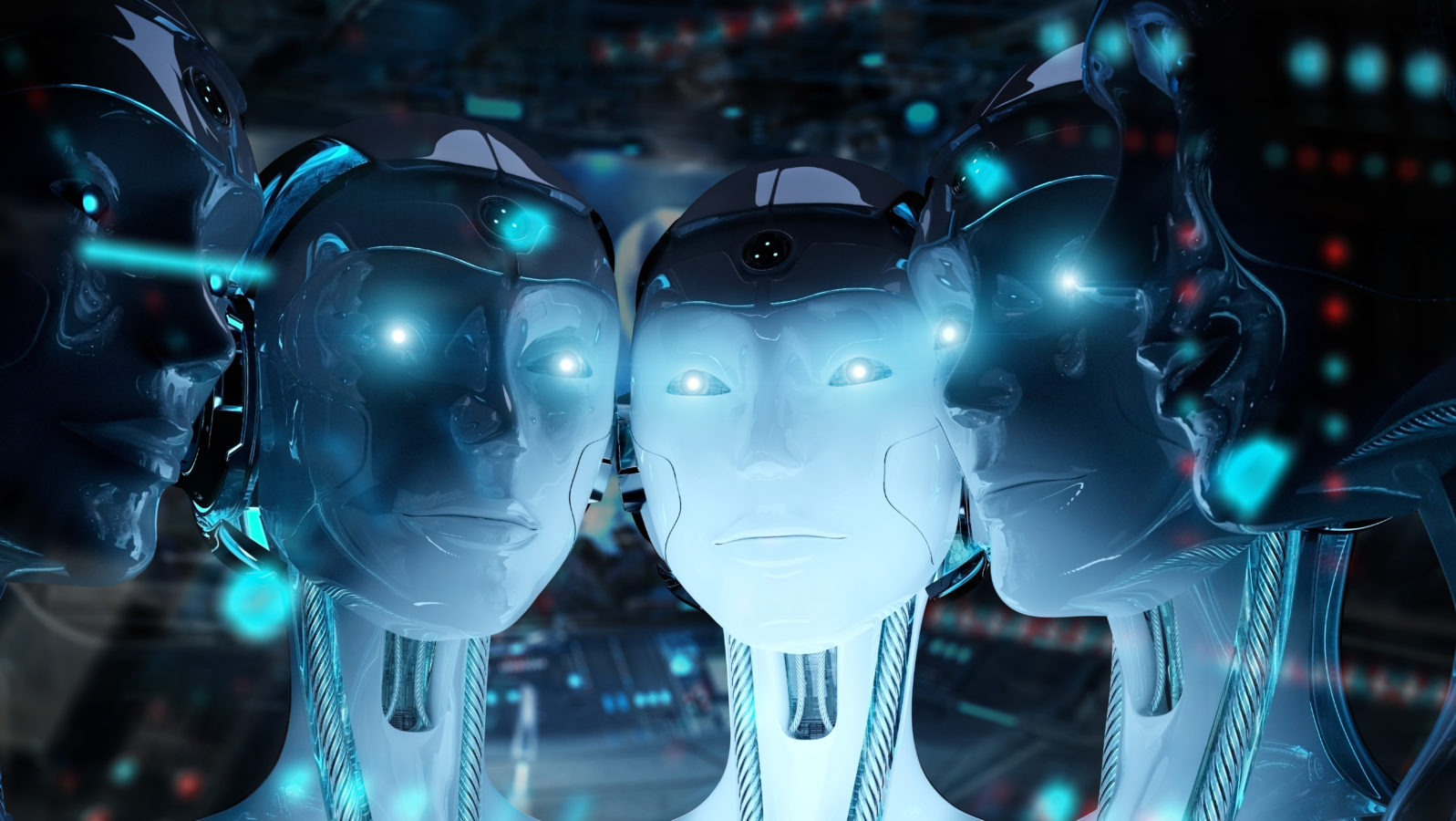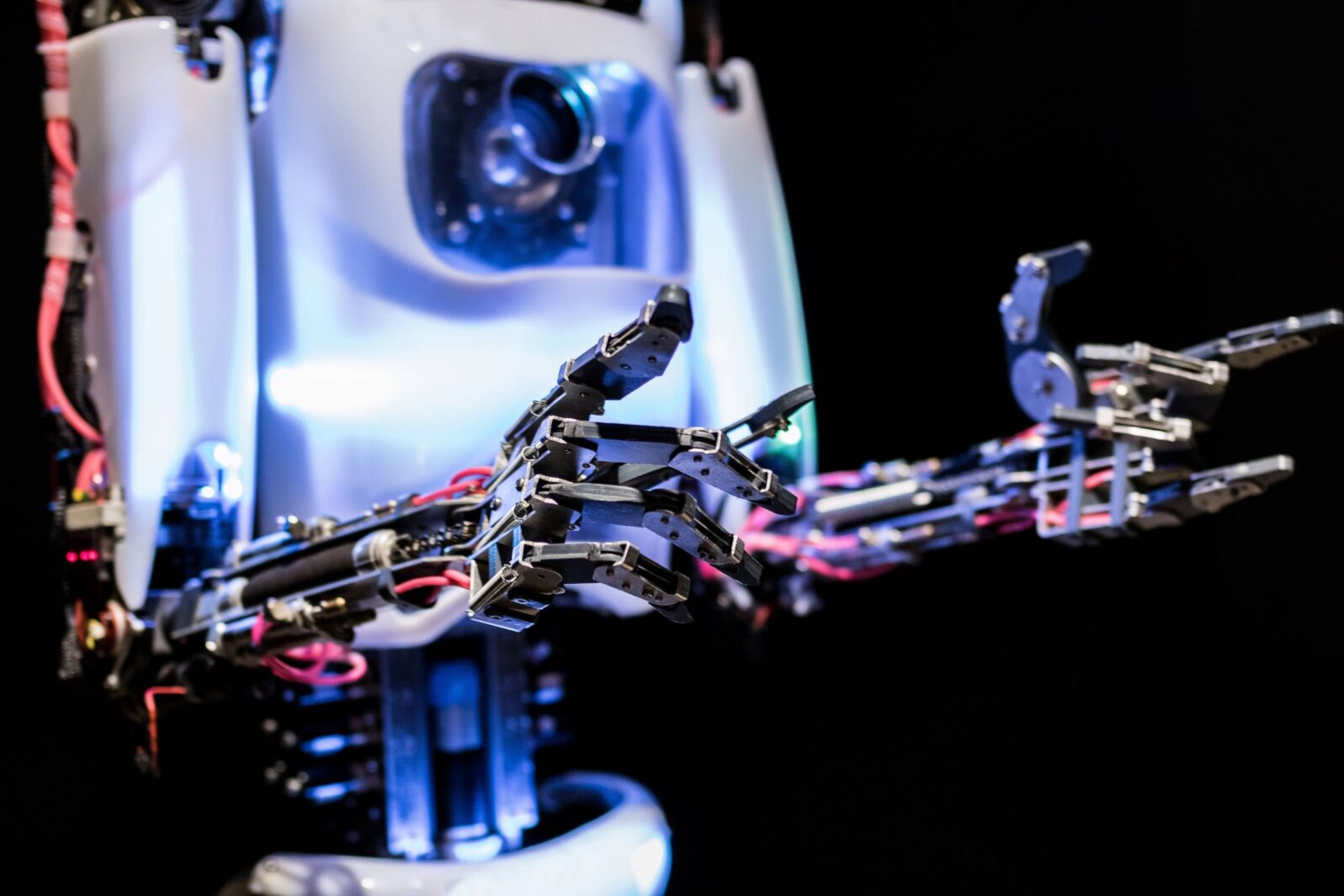Would You Want Immortal Life as a Cyborg?
Would you give up your right arm for a robotic device that performs better? Think about itTranshumanism can mean uploading one’s mind into cyberspace. But some transhumanists hope to slowly morph into “immortal cyborgs” with endlessly replaceable parts.
Five years ago, we were told, we were all turning into cyborgs:
Did you recently welcome a child into the world? Congratulations! An upstanding responsible parent such as yourself is surely doing all you can to prepare your little one for all the pitfalls life has in store. However, thanks to technology, children born in 2014 may face a far different set of issues than you ever had to. And we’re not talking about simply learning to master a new generation of digital doohickeys, we’re talking about living in a world in which the very definition of “human” becomes blurred.
Evan Dashevsky, “Will Today’s Newborns Become Immortal Cyborgs?” at PCMag (March 31, 2014)
The predictions lean heavily on futurist Ray Kurzweil and one of them is #8: by the 2030s, “cybernetic augmentations” such as robotic limbs and wireless transmission of sights and sounds directly to our brains will “become routine.” Thus, by the time a child born in 2014 is in college, “the line between man and machine will already have begun to blur.”
That’s a surprisingly common, confident, and earnestly believed prediction, considering what it entails. Would you give up your right arm for a robotic device that performs better? Think about it. A decade ago, some thought it was already starting to happen:
I remember when, a decade ago, Kevin Warwick, a professor at the University of Reading, in the U.K., implanted a radio chip in his own arm. The feat caused quite a stir. The implant allowed him to operate doors, lights, and computers without touching anything. On a second version of the project he could even control an electric wheelchair and produce artificial sensations in his brain using the implanted chip. Warwick had become, in his own words, a cyborg.
Antonio Espingardeiro, “When Will We Become Cyborgs?” at IEEE Spectrum (March 24, 2010)
But Kevin Warwick, now emeritus, hasn’t been joined by hordes in the meantime. We may be glued to our devices but not permanently. That could be lack of curiosity on our part or just plain caution: If Warwick can control the device that implants artificial sensations into his brain, someone else can as well. Unlike his personal nervous system, these devices aren’t uniquely integrated.

Despite the slow pace and unsettling prospects, futurist James Lovelock, of Gaia fame, sees self-designed cyborgs as replacing mere flesh like us:
Lovelock believes we are already living in the early stages of what he calls the Novacene, an era in which self-sufficient cyborgs, vastly more intelligent than today’s humans, will dominate the Earth…
However, Lovelock doesn’t think the cyborgs will actively attempt to destroy the human race. In fact, he believes we’ll be so inferior to Earth’s new dominant species that they’ll view us the same way we currently view plants.
Kristin Houser, “Futurist predicts cyborgs will replace humans on earth” at Futurism (August 27, 2019)
But, of course, Lovelock’s cyborgs would have to create themselves first, which is a significant challenge. Meanwhile, Elon Musk thinks we should had all better hurry to get a head start on them:
Musk said that as artificial intelligence advances, people will need to augment their brain power with digital technology to prevent them becoming irrelevant.
He backed the idea of a “neural lace” – a new electronic layer of the brain that would allow us to instantly access online information and greatly improve cognitive powers by tapping into artificial intelligence.
James Titcomb, “Elon Musk: Become cyborgs or risk humans being turned into robots’ pets” at The Telegraph (June 2, 2016)
Otherwise, he told the Telegraph, he would be reduced to a status equivalent to a house cat and “I don’t love the idea of being a house cat.”
Some thinkers, including historian Yuval Noah Harari, point out that it is mainly the wealthy among us who can afford to become like gods:
“It will be the greatest evolution in biology since the appearance of life. Nothing really has changed in four billion years biologically speaking. But we will be as different from today’s humans as chimps are now from us.”
However he warned that the ‘cyborg’ technology would be restricted to the wealthiest in society, widening the gap between rich and poor in society. In the future the rich may be able to live forever while the poor would die out.
Sarah Knapton, “Humans ‘will become God-like cyborgs within 200 years’” at The Telegraph
So non-cyborgs will not be house cats, as Musk fears; we will all be dead.
Also, the cyborgs who replace us will see no point in, for example, traditional religion:
But Harari is right that we’re moving into an age of human enhancement, and he’s fairly hopeful that there will be positive consequences. In particular, he expects the cyborgazation of humans to end religion. That may be a tall order at Hebrew University, located in Jerusalem, where people still come from all over the planet to pray to a stone wall, but Harari is thinking in terms of centuries. In Western Europe, North America, and other developed countries, people are dropping organized religion. The new religion, Harari observes, is technology and a blind belief in the infinite power of innovation.
David Warmflash, “Enhancing humans: Becoming a cyborg could end up as a privilege of the wealthy” at Genetic Literacy Project
A common motif of these prophecies is the sense of superiority of electronics, even though genuine artificial intelligence is only promised, not achieved, and our best information is that calculation as such does not produce creativity.
All that said, for some aspiring cyborgs, there is a tragic dimension:
Dr Peter Scott-Morgan, 61, was diagnosed with motor neurone disease two years ago, but instead of accepting his fate he decided to challenge what it meant to be human.
He said he wanted to push the boundaries of what science can achieve so decided to extend his life and become fully robotic – known as Peter 2.0.
Charlotte Vowles and Shivali Best, “Terminally-ill scientist is about to ‘transform’ into world’s first full cyborg” at Mirror
Dr. Scott-Morgan, a roboticist, has undergone numerous, complex operations, for example one in which he lost his voice in a procedure intended to prevent saliva entering his lungs. He told his Twitter followers, “This is my last post as Peter 1.0.” as he sees himself as transitioning into a cyborg. A documentary is planned for early 2020.
“It goes without saying that all my physical interaction with the world will become robotic. And naturally, my existing five senses are going to be enhanced. But far more importantly, part of my brain, and all of my external persona, will soon be electronic – totally synthetic.
“From then on, I’ll be part hardware / part wetware, part digital / part analogue. And it won’t stop there; I’ve got more upgrades in progress than Microsoft. Mine isn’t just a version change. It’s a metamorphosis.”
Charlotte Vowles and Shivali Best, “Terminally-ill scientist is about to ‘transform’ into world’s first full cyborg” at Mirror
Of course some see a market opportunity in all this:
Three years ago, Neil Harbisson, who is completely color-blind, had an antenna implanted in his skull that enables the artist and entrepreneur to sense color via audio vibrations. The long, metallic device, dubbed the ‘eyeborg,’ curves over the top of his head and hovers just above his eye line. It effectively made Harbisson into one of the world’s first cyborgs.
Harbisson’s transformation was extensively covered by the media, and elicited correspondence from people all over the world interested in new senses. In response, he and a team of collaborators have launched Cyborg Nest, a company that aims to manufacture and sell implantable senses under the slogan “Design Your Evolution.” For £250 ($350) you can pre-order the UK-based company’s first product-—the North Sense—and join the ranks of animal species that have the ability to sense the earth’s geomagnetic field and use it like a compass.
Shelley Hepworth, “This company will help you become a cyborg, one implanted sense at a time” at Quartz June 26, 2016
Harbisson has since gone on to develop implant technologies to create other means of sensing in different ways:
But back on the ground, most robotics addresses the problems of people who have lost natural limbs or senses rather than people looking for upgrades or immortality.
The whole trend has the unmistakable feel of the Uncanny Valley, except that we will be the Uncanny and we will never really get there.
Surely, better methods for coping with an amputation are one thing. Becoming an immortal robot is another.
Further reading:
Transhumanism: Is it a dangerous idea? Some Silicon Valley greats hope to merge with machines to live forever. But what then?
Tech pioneer Ray Kurzweil: We will merge with computers by 2045
Is Ray Kurzweil’s Singularity now nearer—or impossible? In response to Kurzweil’s talk at the COSM Technology Summit, panelists noted that AI achievements are revolutionary in size but limited by their nature in scope
Jay Richards: Kurzweil’s Age of Spiritual Machines is fiction, like Skynet
and
Will we become mere apps of our smart machines?
